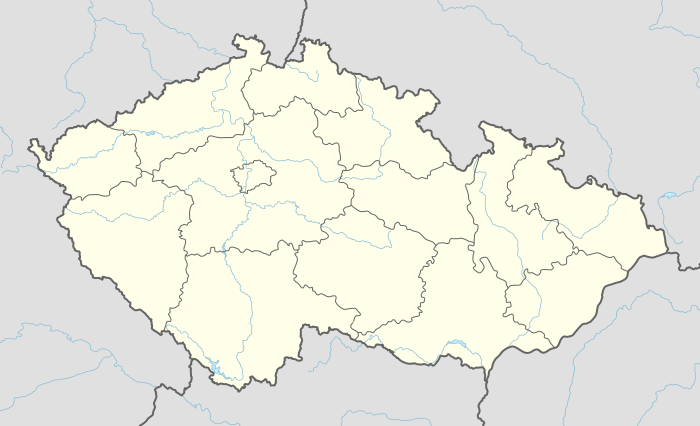Kopřivná
Kopřivná is a village and municipality (obec) in Šumperk District in the Olomouc Region of the Czech Republic. Kopřivná lies approximately 10 kilometres (6 mi) north of Šumperk, 56 km (35 mi) north-west of Olomouc, and 181 km (112 mi) east of Prague. The municipality covers an area of 11.85 square kilometres (4.58 sq mi), and has a population of 299 (as at 28 August 2006). Kopřivná council also administers two hamlets of Lužná and Prameny. Nový Hrad castle is situated in Kopřivná cadastre.
Kopřivná | |
|---|---|
Municipality | |
 | |
 Kopřivná | |
| Coordinates: 50°3′2″N 16°56′53″E | |
| Country | |
| Region | Olomouc |
| District | Šumperk |
| Area | |
| • Total | 11.85 km2 (4.58 sq mi) |
| Elevation | 571 m (1,873 ft) |
| Population (2006) | |
| • Total | 299 |
| • Density | 25/km2 (65/sq mi) |
| Postal code | 788 33 |
| Website | http://www.obeckoprivna.cz/ |
Etymology
Villages name evolution is quite complicated. To 1846, the name was Geppersdorf without any relevant Czech equivalent. Geppersdorf is derived from German personal name of Gepper or Gebhart, meaning Gepper's Village. Czech name was created in 1846, when German letter "g" was replaced by similarly sounding Czech "kopř-", thus new name was "Kopřivnov". The word "Kopřivnov" reminds Czech word "kopřiva" (nettle), thus villages name is "Kopřivná" (literally "Nettle village) from 1924.
History
The village is firstly referred in a note from 1414 where is mentioned as a part of Bludov manor. During events of Thirty Years War, Kopřivná was abandoned and the village was re-established in 1639.
Demography
Number of people was 910 persons in 1900, all of them were Sudeten Germans. Germans were expulsed in 1945, this event caused strong decline of population as the area of Kopřivná was not popular for newcomers.
Population numbers
- 1900 - 910 persons
- 1950 - 548 persons
- 1991 - 298 persons
- 2001 - 284 persons
- 2012 - 268 persons
Other
Prameny
Historically Prameny was a small hamlet situated in meadows east of Kopřivná. The hamlet has no permanent inhabitants. Its name means "Springs"
Lužná
The hamlet used to be an ordinary village. Population numbers were heavily reduced by the expulsion of Germans in 1945. Recent population is 11 people in two houses.
Nový Hrad and Velvíz

Nový Hrad was a castle which was burnt down in Bohemian wars. Ruins have been preserved and have been recently professionally conserved. Velvíz was a village surrounding the castle. Its German population was expelled in 1945 and it has not been repopulated. THE Vevíz area is overgrown by woods now.